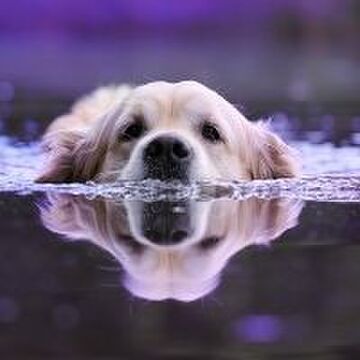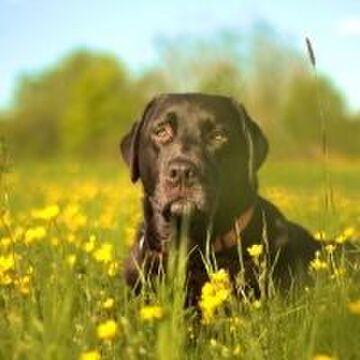
Safely Using Licorice Root for Dogs
Using licorice root for dogs can be very beneficial for several health related issues which we explain in more detail below. But, we need to clarify that we’re talking about licorice root and not the black licorice found in candy stores. Black licorice can be harmful and even toxic for your four-legged friend, so you should avoid this sugary snack at all costs.
We are instead talking about the medicinal herb licorice, which is a perennial legume from the Glycyrrhiza glabra family. It is native to Asia, southern Europe and parts of India and has no relation to the similarly flavored star anise or fennel varieties. For the purposes of our discussion, we’ll be dealing with the root of the licorice legume.
The chemical compound glycyrrhizin is an important part of the licorice root, as it not only contains the sweetness of the legume but all the medicinal properties as well. This element is a natural anti-inflammatory agent, plus it has microbial applications.
Using licorice root properly can eliminate the use of corticosteroids for anti-inflammatory purposes. It’s best to choose a glycerine based tincture vs an alcohol based tincture when using licorice for your dog.
How to Use Licorice Root for Dogs
The anti-inflammatory properties of licorice root are very exciting. Herbalists have been on to the healing properties of glycyrrhizin for thousands of years, with usage recorded to help with everything from upset stomachs to ulcer treatments.
These anti-inflammatory properties can seamlessly be passed down to your pooch, believe it or not.
- Licorice root like this one here can be ingested with ease because pets enjoy the sweet taste, so using it to relieve arthritis, pain and inflammation is relatively easy. There are dry powders available on the market, plus you can simply include a little freshly sliced or minced root with mealtime. There are also supplements and pills available in most stores, so you may want the experiment to see what’s best for your dog.
- Licorice oil can be used to treat the burning and itching associated with fleas and other problems. To make an infusion, place some chopped licorice root in a jar and cover the root in olive oil with about a half-inch to spare.buy hydroxychloroquine online www.wellthysoul.com/wp-content/uploads/2022/08/png/hydroxychloroquine.html no prescription pharmacy
Store for 30 days. Drain the oil and squeeze the licorice root to get at the good stuff. You can save the available licorice oil in your fridge for several months and it can be applied directly to your dog’s skin.
- Licorice root for dogs can be used to treat many forms of liver disease. Some have compared the use of licorice root for liver applications to that of milk thistle, but the glycyrrhizin in licorice root protects the liver cells and enhances T-cell production. This is critical for repairing any liver damage and for resisting the rigors of the disease.
- Studies have shown that using using licorice root can influence the mononuclear phagocyte system, which relates to spleen function and the production of cells called monocytes and macrophages. These cells are critical when it comes to fighting off infection and glycyrrhizin helps stimulate those cells.
- Very helpful for peptic ulcers aka stomach ulcers.buy zithromax online www.wellthysoul.com/wp-content/uploads/2022/08/png/zithromax.html no prescription pharmacy
Dosage:
Tincture: 12-20 drops of tincture per 20 pounds of body weight twice daily.
Cooled tea: One teaspoon of licorice root to one cup of filtered water.
Capsules by weight:
- 1-10 pounds: 1/2 capsule 1-3 times daily
- 10-20 pounds: 1/2-1 capsule 1-3 times daily
- 20-50 pounds: 1-2 capsules 2-3 times daily
- 50-100 pounds: 1-2 capsules 3-4 times daily
- Over 100 pounds: Human adult dosage
**DO NOT use licorice root on your dog for more than two weeks
Preventative Measures
Traditional Chinese Medicine warns that licorice should not be used for those conditions where excessive dampness are involved. Avoid using if nausea and vomiting are also present.
While licorice root for dogs is relatively safe to use, it does have something in common with other anti-inflammatory compounds in that it can lead to sodium retention. This can cause your dog to retain water and can lead to hypertension (high blood pressure) and hypokalemia (low potassium). For dogs with heart issues or those dogs who tend to retain water, licorice root should be used with caution or not used at all.
Finally, don’t give your four-legged friend licorice root for more than two weeks at a time, unless otherwise advised by your dog’s holistic veterinarian.
As with most herbal treatments, caution should be exercised at first to ensure that there are no adverse effects. Licorice root should not be used with diabetic animals or with pregnant or nursing pets. There is some evidence that licorice root interferes with blood-thinning and diuretic drugs, so consult with your dog’s physician if you have any questions along these lines.
It’s not a bad idea to check with your dog’s vet if using for heart or liver disease or combining with synthetic medications.
Reasons to Use Licorice for Dogs
The anti-inflammatory properties of licorice root cannot be overstated, as this is quite simply one of the most effective herbal treatments you can find. It’s also remarkably easy to use, as your pet will take to the taste without issue.
Some dogs may even lick the topical treatment from the second it hits their skin, so be sure to pay extra attention during application.
Licorice root is versatile and easy to use, with everything from licorice oil to licorice pills to chopped licorice root a potential boon for your four-legged friend. While licorice root is safe in general, take care not to exceed two weeks of use unless otherwise directed.
References: Herbs for Pets by M.L. Wulff-Tilford and G.L. Tilford, Whole Dog Journal










